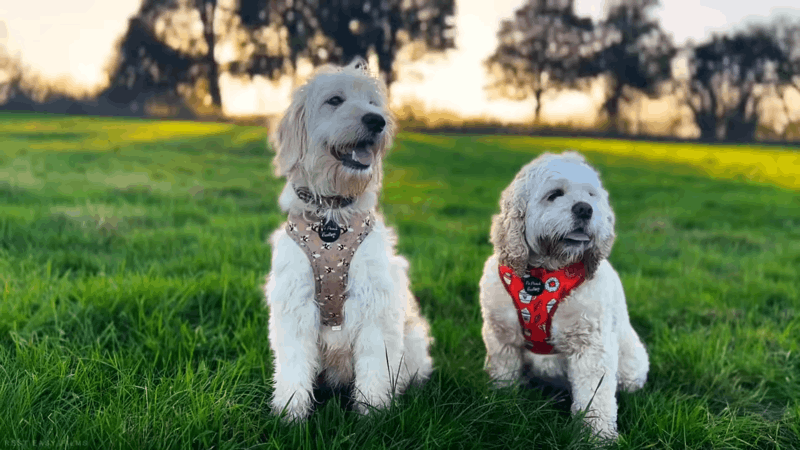No products in the cart.
Struggling with the challenges of CBD dog car sickness is a common concern for pet owners. Whether it’s the anxiety, motion sickness, or stress that plagues your canine companion during car rides, there’s hope for relief and relaxation.
In this blog, we’ll delve into the potential benefits of utilizing CBD dog products to address car sickness. We’ll also provide valuable insights into dosing considerations and safety tips, offering you the knowledge needed to ensure your furry friend’s travels are not only more enjoyable but also stress-free.
Dog Car Anxiety and More Things to Know

Dog car anxiety refers to the nervousness, stress and fear that some dogs experience when traveling in a vehicle. It can make car rides challenging for both the dog and the owner.
Managing dog car anxiety often involves training, desensitization, and the use of calming techniques or products like specialized dog car seats, crate training, or medication under veterinary guidance. The goal is to create a positive and comfortable travel experience for your furry companion.
Dog Anxiety in Car Symptoms
Symptoms of dog anxiety in the car can manifest in various ways. Common signs of car anxiety in dogs include:
- Restlessness: The dog may continuously shift positions, pace back and forth, or be unable to settle down.
- Excessive panting: Even in cool conditions, panting more often than normal may indicate tension and worry.
- Shaking or trembling: Dogs may shake or tremble when they’re anxious in the car.
- Whining or vocalization: An anxious dog may whine, whimper, or bark during a car ride.
- Pacing: Restless movement and pacing within the car are common signs of anxiety.
- Excessive drooling: Anxiety can lead to increased salivation, resulting in drooling.
- Vomiting or diarrhea: Some dogs with severe car anxiety may experience motion sickness, leading to vomiting or diarrhea.
- Hiding or seeking comfort: Dogs may attempt to hide, crawl into tight spaces, or seek physical contact with their owners for comfort.
- Panting or lip-licking: When combined with panting, excessive lip-licking might be an indication of nervousness and stress.
- Dilated pupils: Anxiety can cause a dog’s pupils to become dilated or larger than usual.
- Refusal to enter the car: Some dogs may resist getting into the car altogether, showing clear signs of fear or anxiety.
It’s important to recognize these symptoms to address your dog’s car anxiety effectively. Identifying the specific signs your dog exhibits can help you tailor strategies to reduce their anxiety during car rides.
What Causes Car Anxiety in Dogs?
Car anxiety in dogs can be caused by various factors, including:
- Motion sickness: Some dogs are prone to motion sickness, which can make car rides uncomfortable and anxiety-inducing.
- Negative past experiences: If a dog has had previous negative experiences in the car, such as a traumatic trip to the vet, they may associate the car with fear or discomfort.
- Lack of familiarity: Dogs may feel anxious in an unfamiliar environment, and if they’re not accustomed to car rides, the novelty of it can trigger anxiety.
- Noise and vibration: The noise and vibration of a moving car can be unsettling for some dogs, leading to anxiety.
- Confinement: Being confined to a small space in a moving vehicle can make some dogs feel trapped and anxious.
- Unpredictable movements: Quick starts, stops, or sharp turns can startle dogs and contribute to anxiety.
- Sensory overload: The sights, sounds, and smells outside the car can be overwhelming for some dogs, leading to anxiety.
- Separation from Owners: Dogs may become anxious when separated from their owners, especially if they are alone in the back seat.
- Underlying health issues: In some cases, medical conditions, such as inner ear problems or digestive issues, can contribute to motion sickness and anxiety during car rides.
Understanding the specific cause of car anxiety in a particular dog can help in implementing effective strategies to alleviate their anxiety and make car travel a more positive experience.
Dog Car Anxiety vs. Motion Sickness: What is the Difference?
Dog car anxiety and motion sickness are related but distinct issues when it comes to a dog’s response to car rides:
Dog Car Anxiety:
- Dog car anxiety is a psychological or emotional response to being in a car.
- Stress or fear-related behaviors including pacing, whimpering, panting, restlessness, or attempts to conceal are frequently present.
- It can be triggered by negative past experiences, unfamiliarity with car rides, or sensory overload, among other factors.
- Dogs with car anxiety may exhibit these signs even when the car is not in motion.
Motion Sickness:
- Motion sickness in dogs is a physical reaction to the motion of the car.
- Drooling, nausea, vomiting, and occasionally diarrhea in dogs are common symptoms.
- It is caused by a disturbance in the dog’s inner ear balance system due to the motion of the car.
- Dogs with motion sickness may not necessarily show signs of anxiety or fear but will experience physical discomfort when the car is moving.
While these two issues can sometimes overlap (anxious dogs might be more prone to motion sickness due to stress), they require different approaches for management. Addressing car anxiety involves behavior modification and desensitization techniques to reduce stress, while motion sickness is typically treated with medications designed to prevent nausea and vomiting.
If your dog experiences both anxiety and motion sickness, it’s essential to work with a veterinarian to develop a comprehensive plan to address both concerns effectively during car rides.
What Can I Give My Dog for Car Sickness?

For car sickness in dogs, you can consult your veterinarian for suitable options. The vet may recommend medications or prescription anti-nausea drugs to address motion sickness.
Natural remedies like ginger-based products or specially designed dog car seats also can be considered. Always follow your veterinarian’s advice regarding the right dosage and treatment strategy for your dog’s individual requirements.
Can I Give My Dog Dramamine for Car Sickness?
Dramamine (dimenhydrinate) can be given to dogs for car sickness, however, it’s critical to do so under the guidance of your veterinarian. Dramamine is an antihistamine commonly used to treat motion sickness in dogs.
Please keep in mind that the dosage and frequency should be determined by your vet based on your dog’s specific weight, age, and health condition. Self-administering medications without professional advice can lead to incorrect dosing and potential side effects. Always consult your veterinarian before giving any medication to your dog, including Dramamine, to ensure their safety and health.
Dog Car Sickness Benadryl vs Dramamine: Which is Better?
The choice between Benadryl and Dramamine for dog car sickness depends on your dog’s specific needs and veterinarian recommendations. Here is a comparison that you can consider:
| Aspect | Benadryl | Dramamine |
| Active Ingredient | Diphenhydramine (antihistamine) | Dimenhydrinate (antihistamine) |
| Primary Use | Allergies, itching, motion sickness | Motion sickness, nausea, vomiting |
| Sedative Effect | Yes, often causes drowsiness | Yes, can cause drowsiness |
| Dosage for Dogs | 1 mg per pound of body weight every 8 hours | 2-4 mg per pound of body weight every 8 hours |
| Duration of Action | Approximately 6-8 hours | Approximately 4-6 hours |
| Safety Considerations | Can cause drowsiness and should be used with caution, especially in older dogs or those with certain medical conditions. Consult a veterinarian before use. | Can cause drowsiness, and like Benadryl, it should be used cautiously and under veterinary guidance. Avoid use in dogs with certain conditions. |
| Potential Side Effects | May include drowsiness, dry mouth, urinary retention, or gastrointestinal upset | May include drowsiness, dry mouth, gastrointestinal upset, or restlessness |
| Suitable for Long-Term Use | Benadryl is generally not recommended for long-term use. | Dramamine can be taken briefly while traveling, but prolonged use should be discouraged. |
| Suitable for Puppies | Consult a veterinarian for appropriate dosage. | Not typically recommended for puppies. Consult a vet for guidance. |
Both Benadryl and Dramamine can potentially be used to address car sickness in dogs, but the choice between them should be made in consultation with a veterinarian, considering factors like your dog’s age, size, and overall health. It’s crucial to use these medications as directed and under professional guidance to ensure your pet’s safety and well-being during car travel.
CBD Dog Car Sickness: Is It Safe to Use?

Using CBD dog car sickness can be considered but should be done under veterinary guidance. While it’s generally regarded as safe, appropriate dosage and product quality are crucial. Individual responses vary, and close monitoring for any adverse effects is essential to ensure your dog’s well-being during car travel. Always consult your animal specialist before using CBD for dog car sickness.
When to Give CBD for Dog Car Sickness?
The timing of when to give CBD dog car sickness can vary based on your dog’s individual needs and the specific product you’re using. However, here are some general guidelines to consider:
- Pre-trip: It’s often recommended to administer CBD to your dog about 30 minutes to an hour before the car ride. This can allow the CBD to start taking effect and potentially help calm your dog’s anxiety before the trip begins.
- Regular dosing: Depending on the product and your veterinarian’s recommendation, you may need to give CBD to your dog on a regular schedule leading up to the trip if your dog has chronic car anxiety.
- As needed: If your dog only experiences occasional car anxiety, you can give CBD as needed before car rides.
- Trial and observation: It’s a good idea to do a trial run with CBD before the actual trip to observe how your dog responds. This can help you determine the ideal timing and dosage for your specific dog.
- Consult your vet: Always consult your veterinarian for guidance on when and how to administer CBD dog car sickness. Depending on the size, needs, and general health of your dog, they can offer tailored advice.
Remember that CBD products can vary in potency, so following your vet’s advice on dosage is essential to ensure the safety and effectiveness of using CBD dog car sickness.
How Can CBD Ease Dog Car Sickness?
CBD may potentially ease dog car sickness through several mechanisms:
- Anxiety reduction: CBD is known for its anxiolytic (anxiety-reducing) properties. By calming your dog’s nervous system, it can help alleviate the anxiety and stress associated with car rides, reducing the likelihood of motion sickness triggered by stress.
- Nausea and vomiting control: CBD’s interaction with the endocannabinoid system can influence receptors that control nausea and vomiting. This can help manage the physical symptoms of car sickness.
- Muscle relaxation: As a muscle relaxant, CBD may lessen the intensity of motion sickness symptoms like pain and tense muscles.
- Anti-inflammatory effects: Inflammation in the inner ear can contribute to motion sickness. CBD’s anti-inflammatory properties may help alleviate such inflammation, reducing the likelihood of motion sickness.
The quality and formulation of the CBD product, as well as the correct dosage, play crucial roles in its efficacy. Consult with your veterinarian for guidance on using CBD to address your dog’s car sickness, as they can provide personalized recommendations based on your dog’s specific needs and overall health.
Conclusion
Addressing CBD dog car sickness presents a promising avenue for pet owners seeking natural solutions to alleviate their furry companions’ travel-related anxiety and motion sickness. With its potential to reduce stress and nausea, CBD may offer relief to some dogs. However, individual responses vary, and it should be used cautiously under veterinary guidance to ensure proper dosing, product quality, and safety.
Hello, I am Hazel Bennett, an experienced copywriter specializing in the fascinating topic of CBD for dogs. With a passion for pet wellness and extensive knowledge of CBD’s potential benefits, I am here to provide you with informative and engaging content.



